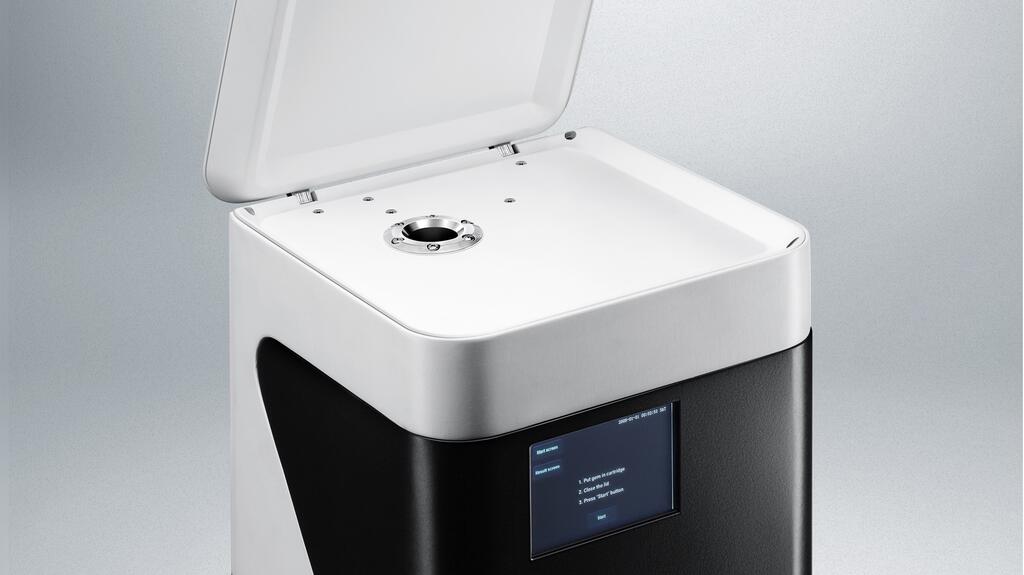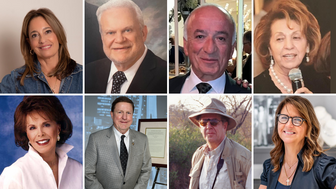Alrosa Introduces New Nanotechnology to Trace Its Diamonds
The non-invasive laser markings are imprinted inside the crystal lattice and can only be seen with a specialized scanner.

The mining company announced Tuesday it is employing non-invasive laser markings to distinguish its diamonds from others and provide detailed information about their origins.
The markings cannot be destroyed or polished off, Alrosa said.
The method for physically marking rough and polished diamonds was developed with the help of scientists from the Russian Academy of Sciences, Alrosa’s Research Geological Enterprise, and the Yakutniproalmaz Institute.
It differs from other engraving technologies in that a laser “nanomark” is imprinted inside the crystal lattice, across the atomic structure of the diamond.
According to Oleg Kovalchuk, who supervised the project at the Yakutniproalmaz Institute, a nanomark is applied to the diamond using a laser pulse of a certain wavelength, intensity, and duration.
This pulse causes “nanoregions” to form across the diamond’s entire crystal, which can only be viewed with a scanner created specifically for reading the marks.
The mark is a 3-D code linked to Alrosa’s Provenance platform and offers information about the stone’s origin and characteristics as well as a unique identification number, photo, video, and details about cut.
It allows the stone to be identified with 100 percent accuracy, Alrosa said.
Scientists involved also think that as the technology evolves, it could become an important way of embedding large amounts of data within the diamond, like media files, images, and music.
Alrosa will offer its partners marked diamonds and the equipment needed to read them.
It said it believes this to be the first time this technology is being used for commercial purposes to trace rough and polished diamonds.
The diamond miner is seeking patents now in major diamond-trading centers across the world; it has started the application process in the United States, China, Hong Kong, Macao, Taiwan, the United Kingdom, Israel, Belgium, and India.

It’s the latest move from Alrosa to improve the traceability of its stones amid increased consumer desire for transparency.
This has included joining De Beers’ diamond industry blockchain platform, Tracr, in 2018, followed the next year by the introduction of “electronic passports” for its diamonds, which include information about the characteristics of the diamond as well as its age, the place and date of extraction, when and where it was cut, and the name and background of the craftsperson behind it.
Last November, Alrosa and Get Diamonds also teamed up to introduce a provenance section on the diamond trading platform.
The Latest

From influential executives to innovative designers, we pay tribute to the people we said goodbye to this year.

The retailer is expanding into areas with large Indian and South Asian populations.

The Italian brand has opened its first flagship amid the peaks of the Dolomites in Madonna di Campiglio, Italy.

How Jewelers of America’s 20 Under 40 are leading to ensure a brighter future for the jewelry industry.

The couple pleaded guilty to concealing at least $127 million in cash transactions at its precious metals businesses.


Consumers shared concerns about prices, inflation, tariffs, trade, and politics in the survey’s write-in response section.

In February 2026, the auction house will move its headquarters to the former Steinway Hall, a neoclassical landmark on Billionaires’ Row.

Roseco’s 704-page catalog showcases new lab-grown diamonds, findings, tools & more—available in print or interactive digital editions.

The new show will take place Jan. 23-25, 2026.

The LVMH-owned brand has partnered with the costume design union to revamp its award for 2026.

The luxury titan inked a deal to acquire an initial minority stake in the jewelry manufacturer with a pathway to full ownership by 2032.

The company’s curation of unsigned vintage and estate jewelry debuted at the Bloomingdale’s in Costa Mesa, California.

In the recent multi-shipment seizure, CBP also found counterfeit Audemars Piguet, Moncler, and Chrome Hearts items.

Helzberg’s Chief Retail Officer Mitch Maggart shared details about its tests of a new store concept rooted in an elevated luxury experience.

Jewelers of America execs and National Jeweler editors discuss tariffs, the sky-high gold price, and the engagement that broke the internet.

The luxury goods company said founder Ippolita Rostagno will remain at the brand’s helm.

Laura Burdese, who joined the Italian luxury brand in 2022, will take on the role in July.

The National Jeweler editors revisit the most noteworthy industry happenings and design trends from 2025.

Need a gift for the cat lover who has everything? Look no further than our latest Piece of the Week.

It purchased the “Grosse Pièce,” an ultra-complicated Audemars Piguet pocket watch from the ‘20s, for a record-breaking price at Sotheby’s.

The lab-grown diamond grower now offers custom engagement and fashion jewelry through its Kira Custom Lab Jewelry service.

Chandler got his start at Michelson Jewelers and has served as DCA president and CEO since 2001. He will retire at the end of the month.

The boutique is slated to open this week inside Terminal 8, offering pre-owned Rolex watches and more to international travelers.

Sponsored by Digital Monitoring Products

The special-edition egg pendant ingested in a New Zealand jewelry store was recovered after a six-day wait.

Associate Editor Natalie Francisco plays favorites with Piece of the Week, selecting a standout piece of jewelry from each month of 2025.

The “Love and Desire” campaign is inspired by the magic that follows when one’s heart leads the way, said the brand.




























